Chess Board With Drawer Plans
Chess is a worldwide game that has no gender, age, or skill restrictions. Anyone can play chess. Anyone can play competitively or casually. And with today's technology, anyone can play someone from across the globe via their cell phone. While I play about a dozen chess games daily on my phone or computer it's just not the same as playing on a physical chess board with someone sitting across from you.
So with that said, I decided to make a chess board this week. But making just a chess board is kinda boring when it comes to making a video and I also wanted a place to put the pieces. So the idea of a chess board box was born. I wanted the box to slide open rather than lift off or be fixed with hinges. It's a style box that I made previously with my 2 player Chinese checkers box.
I'm not making the pieces though. First, I don't think I have the patience to make a full set of chess pieces to the appropriate sizes. And second, I already have a set that's been sitting around waiting for a board for 3 years now. I picked up this set a few years back while traveling. I have no clue what material they are made from but they are hand carved as each and every one is unique. There is actually a lot of variance from piece to piece. Nevertheless, I like this set and now is the time for them to have a proper board. I didn't make a set of plans for this project but I do have a free SketchUp file for those who are interested.
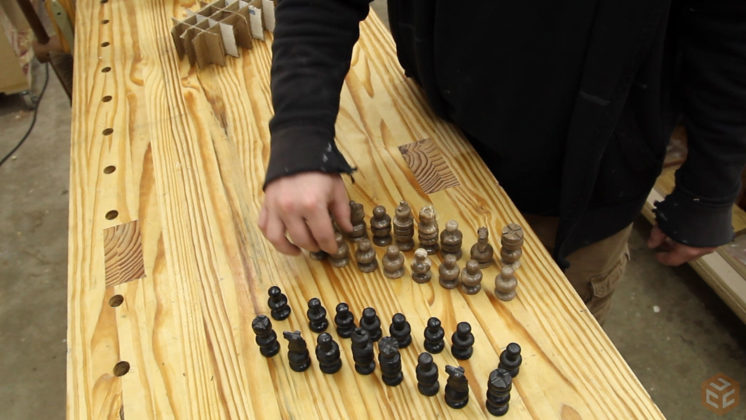
I'm trying to "thin the lumber rack heard" as of late. My lumber rack seems to be a place for lumber to go and be forgotten about. Everything on it has been up there for way too long collecting dust. For the contrasting colors I will be using walnut and hickory. The first step in my milling process is to rough cut the pieces to length at my miter saw station. I say it a lot but having a dedicated cross cutting station that can handle long and wide boards with ease and is always setup and ready to go is incredibly handy.
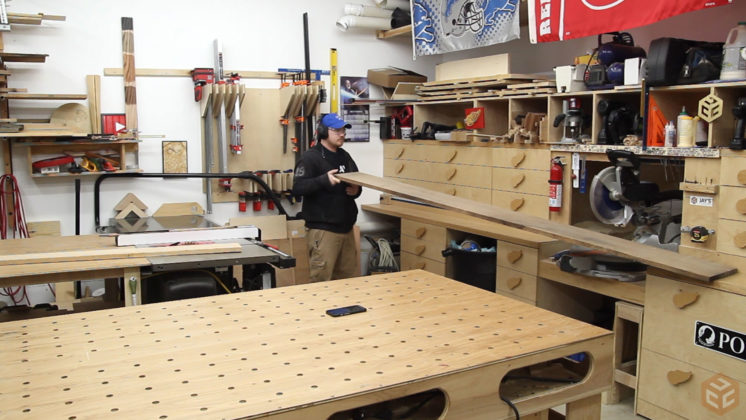
The walnut I was working with was a bit wide for my jointer. I still could have jointed the boards at full width but knowing that this piece will be ripped down into strips eventually I decided it would be a little easier to rip it at the bandsaw first.

Then the smaller pieces were jointed flat and square on two sides.
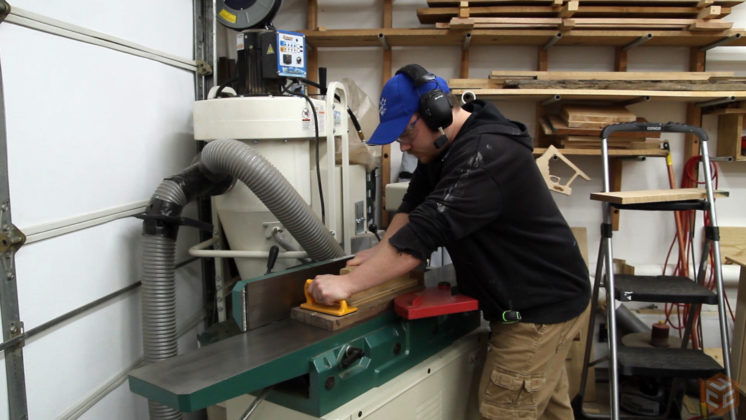
And planed to a maximum thickness.
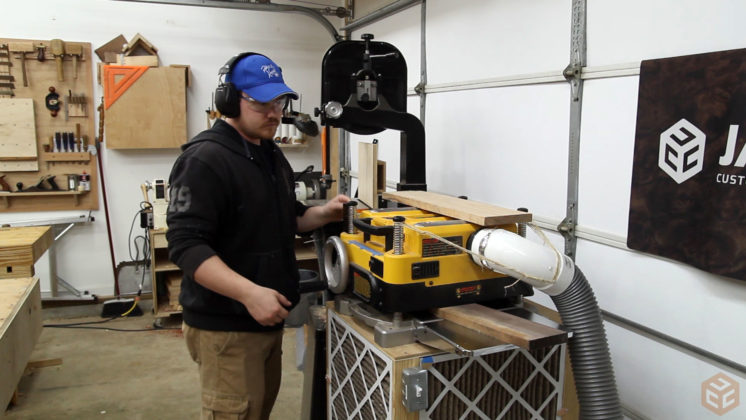
With my material now at a consistent thickness I ripped strips of walnut and hickory for the board.
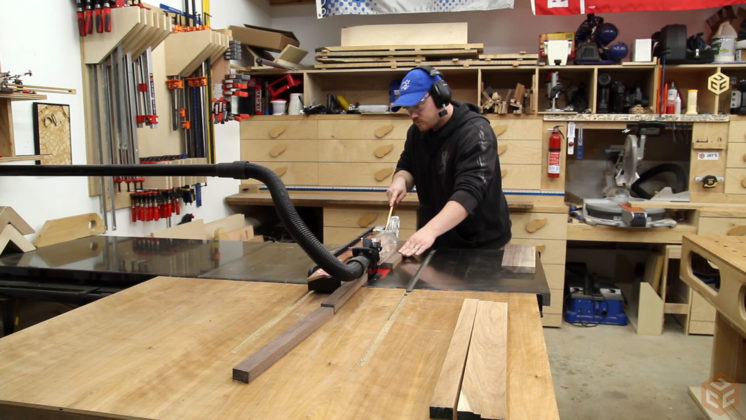
To make the glue up a little easier I decided to cut the strips to a consistent length. This will need to be done after the glue up as well.

Eight strips are needed for a chess or checkers board. Four each of contrasting materials. Glue up number one.
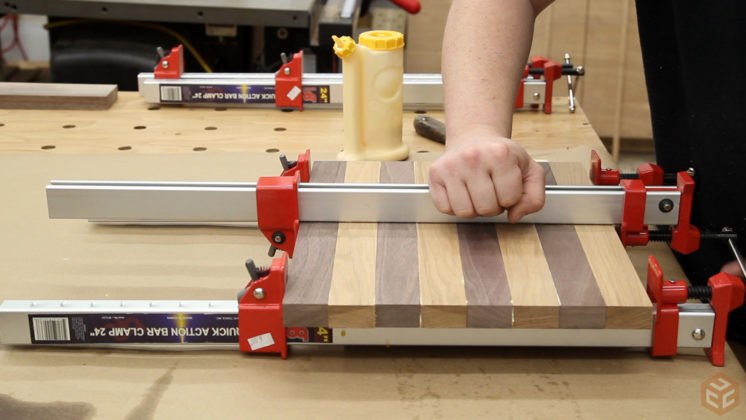
While the board sat in clamps I got started on the box material. Again, step one in the milling process is rough cutting at the miter saw station.

Followed by ripping the board to rough width at the table saw.
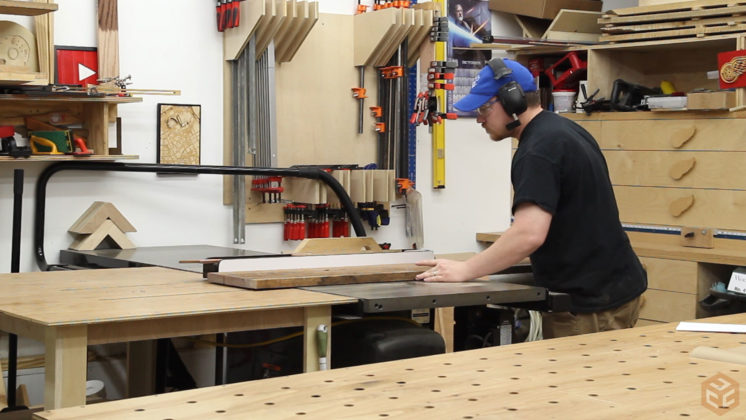
Two faces were jointed flat at the jointer and then planed to the appropriate thickness at the planer. I had my "clone" help me with the outfeed.
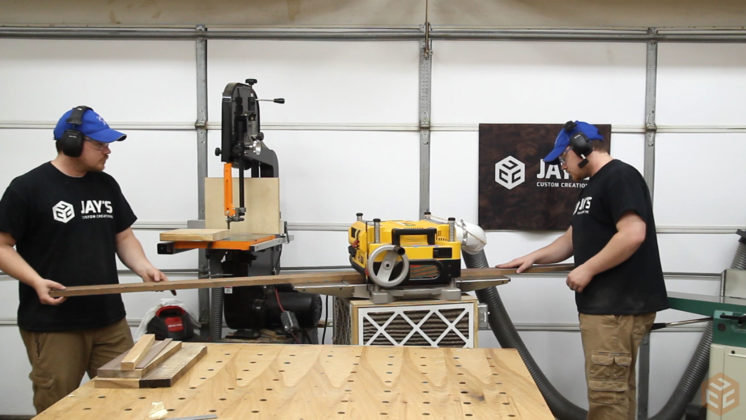
And finally the last side can be established at the table saw by ripping to the final length. I actually ripped these to 1/8" wider than what the final length would be. You'll see why this is necessary in a little bit.
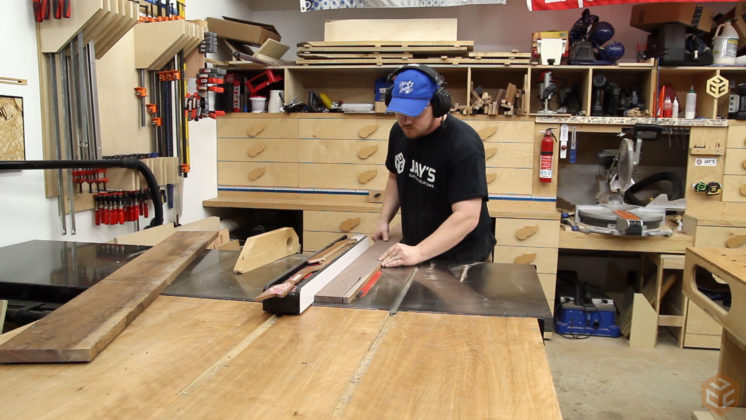
I don't have a dedicated 45 degree crosscut sled and really don't want to mess up my main crosscut sled. So instead I made a makeshift sled with two miter gauges. The red handle miter gauge is from my table saw and the silver handle miter gauge is from my bandsaw. I used a square to set each one 90 degrees to the table saw fence.
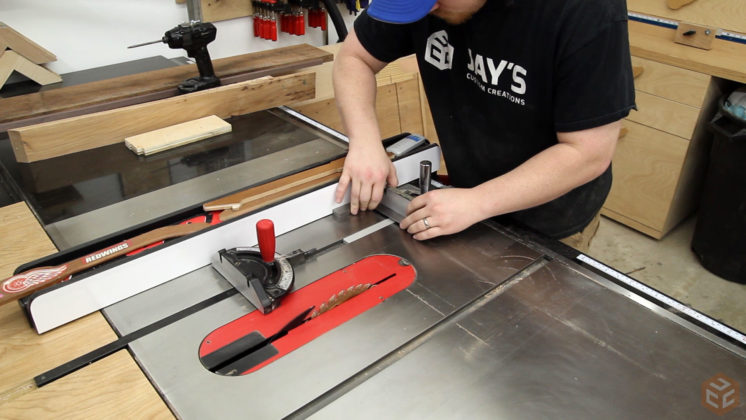
For the miter fence I used a piece of hickory that was milled square on all four sides. A couple of washer head screws are all that is necessary to attach it to the miter gauges. Instant makeshift sled.

The reason for using a fence with the miter gauges instead of just the miter gauge is it adds a lot more stability to the cutting process. Especially considering I was using a long piece of material. Clamping a stop block to the fence ensures I get four identical sides that will make a perfect square.
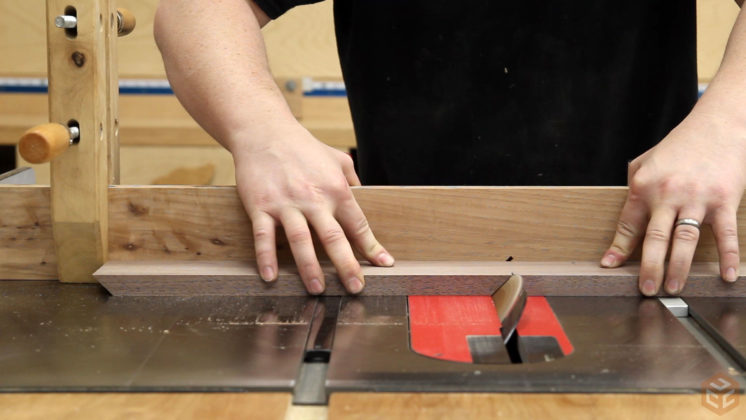
As long as the blade is dialed in to 45 degrees in the last step the resulting pieces should make a perfect square. At this time the first glue up of the board was complete.
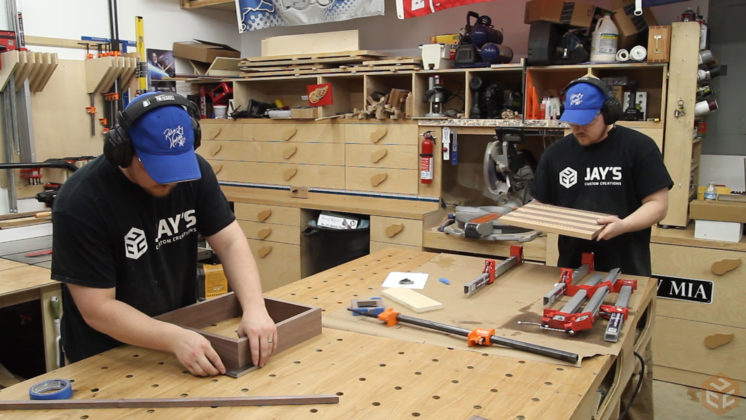
The board was in clamps for about a half hour. That's plenty long enough for the glue to set up inside the joint but it's also the perfect time to scrape off the squeeze out.
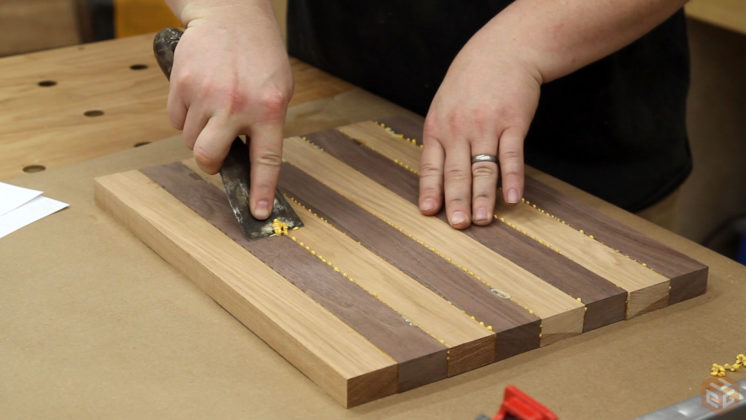
The board needs to be crosscut into 8 more strips. One side was squared off at 90 degrees with the makeshift sled first and then the strips can be ripped with the table saw fence.

The second glue up is an end grain glue up. To make sure everything lined up perfectly I clamped two straight boards to each side and then tightened down the clamps to squeeze the joints shut. This makes sure that all of the intersections are dead on without having to line anything up manually.
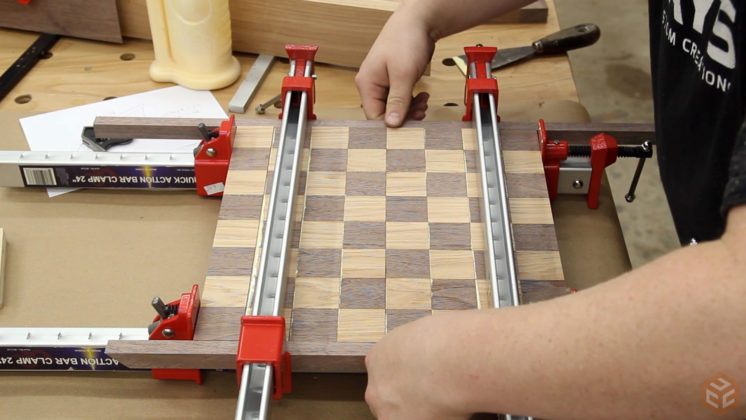
Here you can see why I went with a 12" board. 12" is the maximum resaw capacity of my bandsaw. If I leave the board as solid wood then that would lead to expansion and contraction problems as the board will eventually be the sliding lid. So instead only a thin layer of the lid will actually be the chess board.
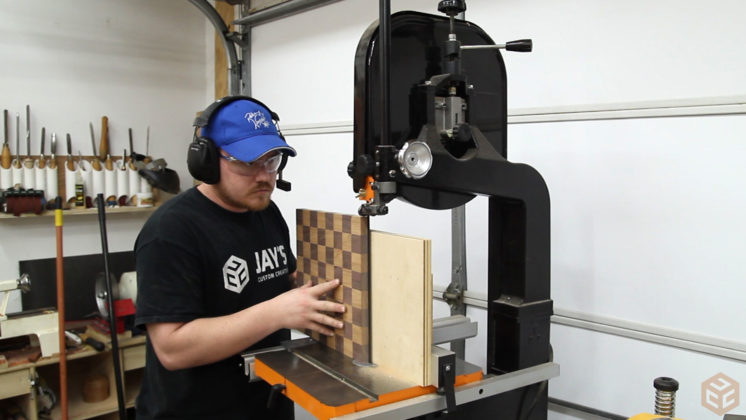
A piece of 1/2" plywood was used for the core of the board which meant the chess board veneer needed to be glued to it. This is a situation where a vacuum press would have been really handy. Instead I just used a bunch of tape on the perimeter, stacked the rest of the chess board stock on top, and then weighted it down with a gallon of paint and a half-gallon of wood glue. It worked great.

While the board was in glue up number three I went back to working on the box. For the bottom I wanted to make a book matched hickory panel. Luckily there was a perfect size piece of scrap on my lumber rack waiting to be used. The loose assembled box sides confirmed that the piece was large enough.
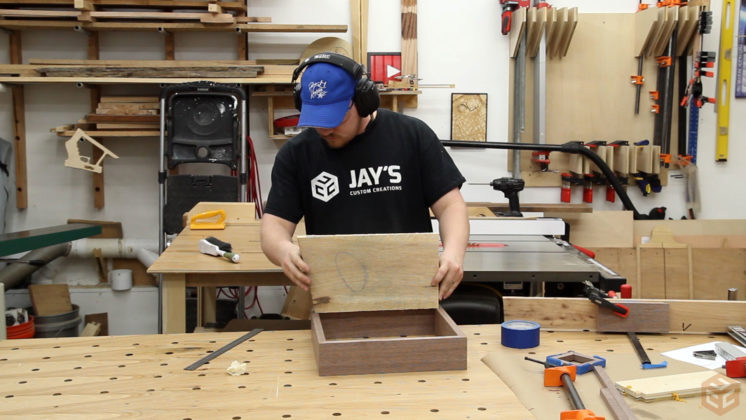
After jointing and planing three sides square the hickory was resawed right down the middle. Then with the bandsaw side facing up I planed them to a consistent thickness.
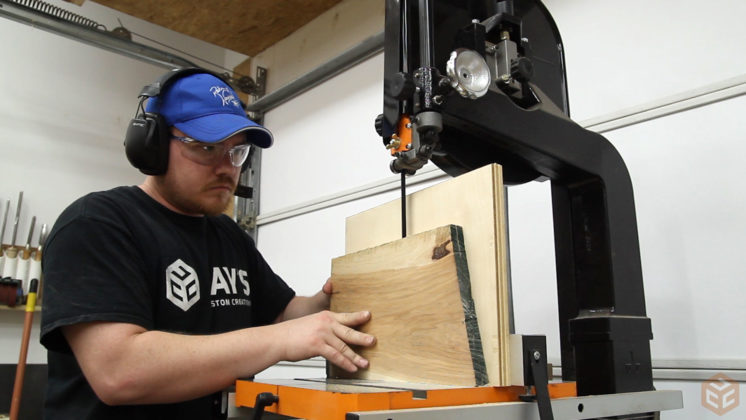
Gluing together thin panels like this is MUCH easier to do with tape than with clamps. First tightly tape the two pieces together on the good side.
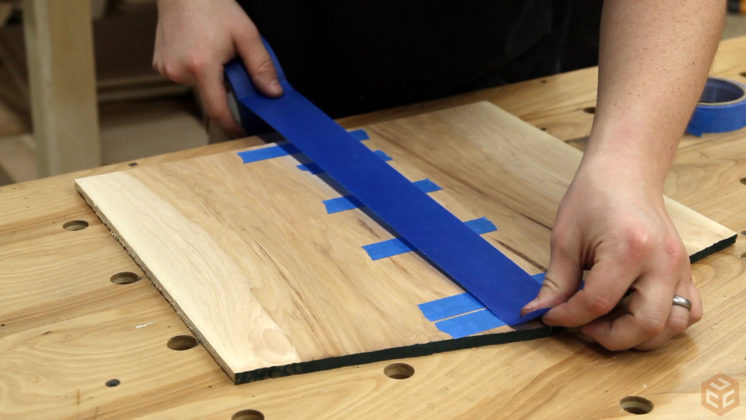
Then flip it over, open the joint, apply glue, and lay it flat. Depending on how thick the panels are you might not even have to add any weigth to the pieces to keep them flat. In this case I literally dropped it on the table and let it sit. The tape on the bottom side is holding the joint tight and the glue squeeze out ends up being on the bad side which will make clean up easy.
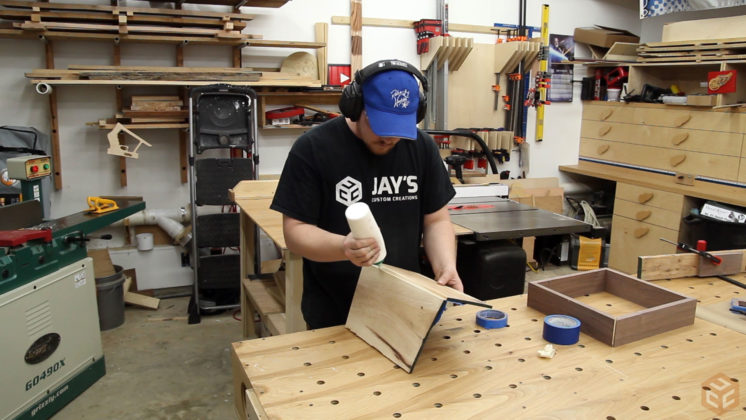
Back to the chess board. At this stage the plywood core was a little larger than the checkered veneer. A shooting board makes quick work of getting everything nice and square.
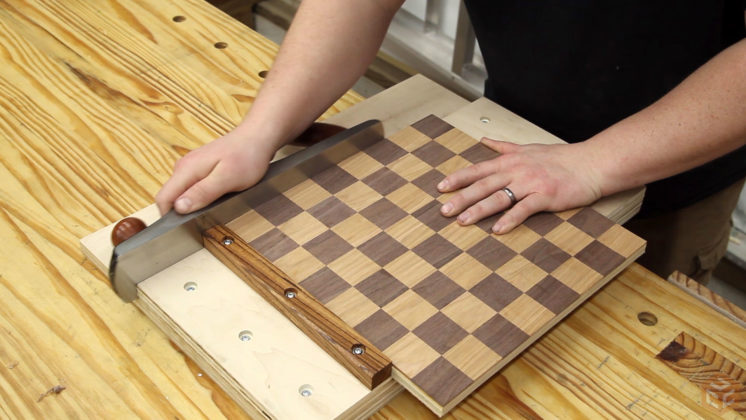
I didn't want the plywood core to be visible when the lid slides out. To prevent this I ripped a few pieces of plywood to be used as a mitered frame.

Each piece had 45 degree cuts on each end. I made these a little long though. It's always best to trim them up and fit each one individually.
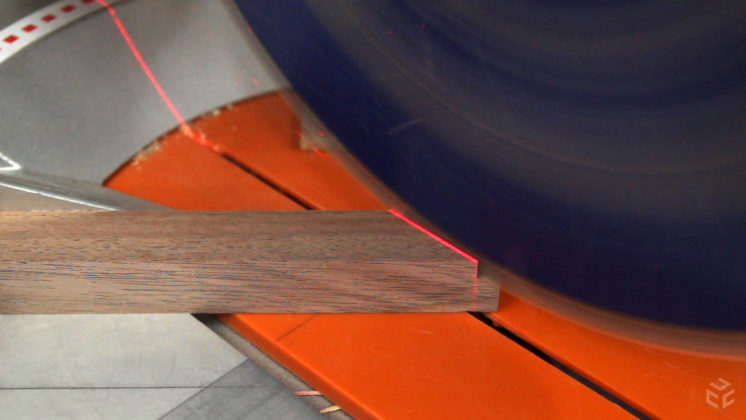
To fit each frame piece I used a 45 degree attachment on my shooting board. This allows me to work my way around the board and make sure each piece is shaved to the exact length. Once a side is fitting appropriately I used a couple pieces of tape to hold it in place to aid in fitting the next piece.
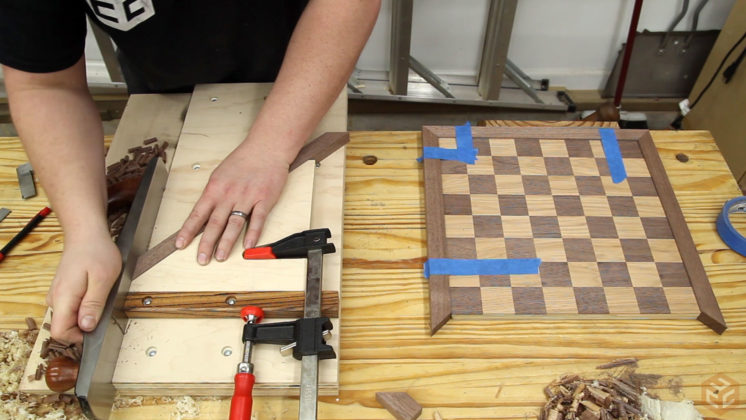
Once the entire frame was sized and fit I did a little surface prep on the chess board. I'm a huge fan of using a card scraper instead of sandpaper whenever possible. They are much quicker, leave a better resulting surface, and are a lot less expensive in the long run than sand paper.

Gluing the chess board frame was done with tape just like the bottom panel. A little glue in the joint and tape to protect against squeeze out.
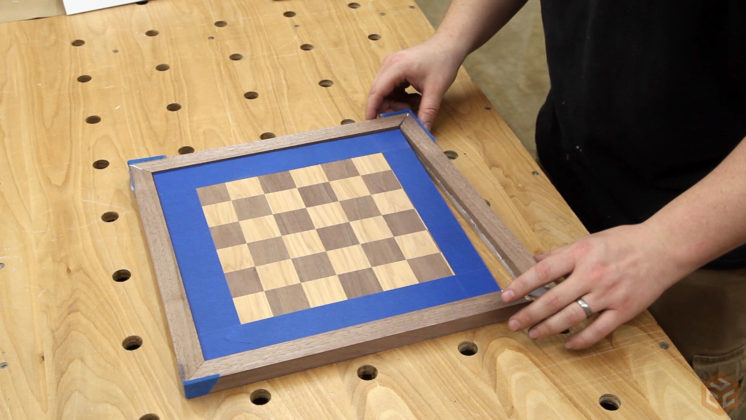
Back to the box pieces. The bottom panel and the sliding top are both going to be sitting in grooves. Before cutting the grooves I trimmed three of the four side pieces down by 1/8" leaving the front piece 1/8" taller than the other sides. To cut the grooves I used the table saw. I know that my blade is exactly 1/8" wide which makes spacing pretty easy.
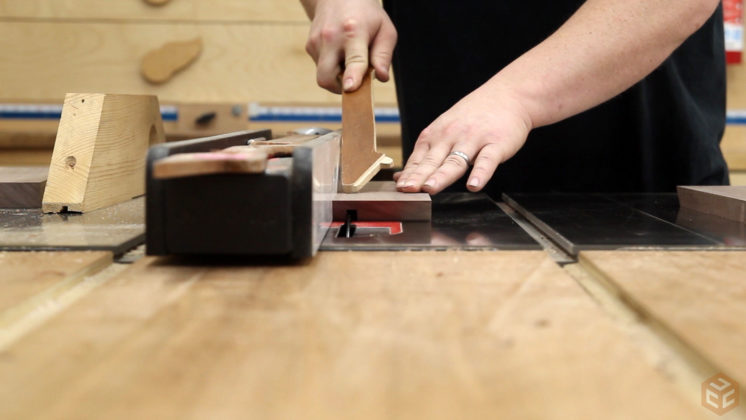
The front piece needs to be 1/8" taller than the rest of the box. That's because the top panel groove will actually be detached from the front piece and glued to the sliding lid. If I did not make the front taller by the thickness of my table saw blade than the resulting cut would leave this piece short once it is glued onto the lid. After all of the grooves were cut I separated the top groove from the front piece.
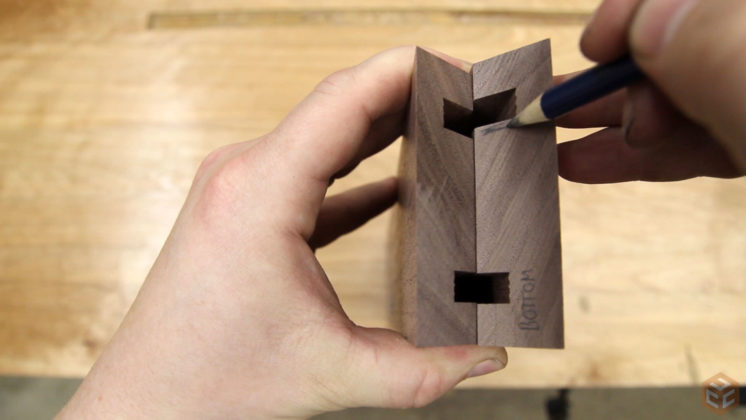
With the grooves cut in the box sides I was able to get an exact measurement for the bottom panel. All four sides of the panel were cut square at the table saw.

Gluing the box together was done with tape at first and a couple of clamps in alternating directions to really hold the miters tight. I also added a drop of glue in the center of the panel on the end grain side. This will allow the panel to still expand and contract from the center out but will prevent the panel from rattling around if it shrinks any.

A rabbet needs to be cut on the lid in order for it to slide in the groove. I really took my time setting up and double and triple and quadruple checking everything to make sure I had the correct spacing. This is an easy area to make a cut in the wrong spot and completely ruin the board frame. Luckily, I didn't screw it up.
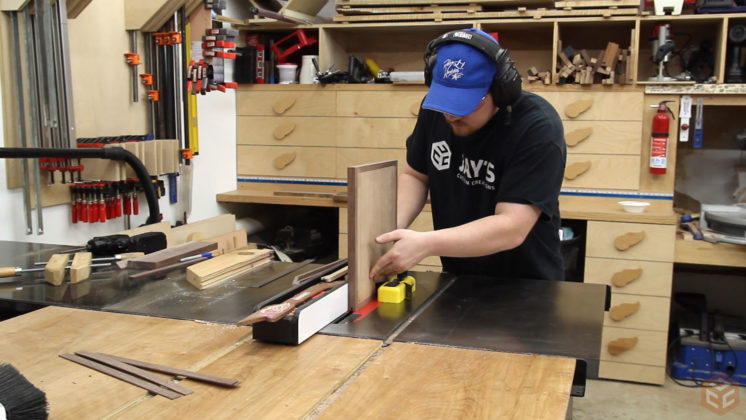
The fit was perfect for the lid. Not too tight and not too loose. Next up the top groove piece on the front panel was glued to the lid. I used a couple pieces of folded paper to space this piece away from the board slightly to match the reveal left on the opposite side of the board when the lid is closed.
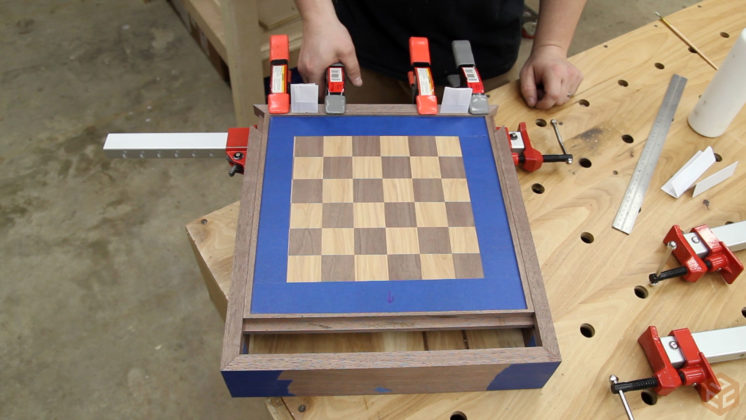
I know my table saw blade leaves exactly 1/8" kerf cuts so I sized the internal divider pieces to be a tiny bit less than 1/8" thick. Then with the blade slightly higher than half the height of the dividers I could gang cut all of my divider half lap joints. This took a bit of measuring and dividing and layout to make sure everything was correct before cutting.
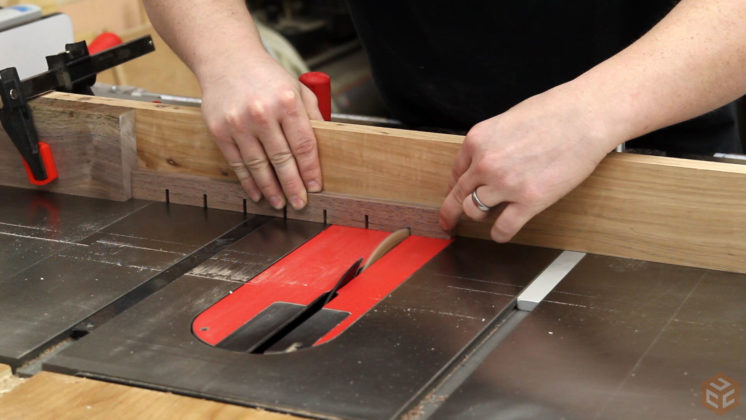
Everything fit without any tweaking. I actually installed them rotated 90 degrees from how they should be on the first fit. Luckily the box is a perfect square so they fit in the appropriate direction as well.

The last step was to fine tune all of the joints to make sure everything was exactly flush and there was no glue squeeze out present on the finished surfaces.
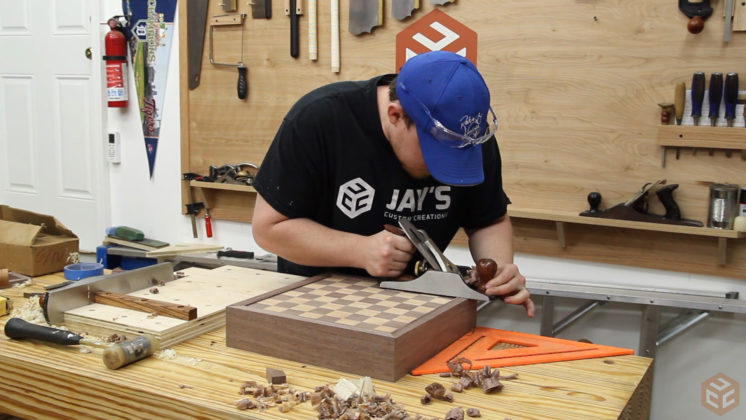
For a finish I used regular mineral oil. I may or may not add a more durable finish later. I chose mineral oil because it leaves a more natural final surface that I like and I'm not entirely certain on if I want to put splines in the miters. I had planned on adding splines but I really like the clean look of the walnut mitered corners. Time will tell if I actually add them and just using mineral oil for a finish will allow me to more easily make the change at a later date.
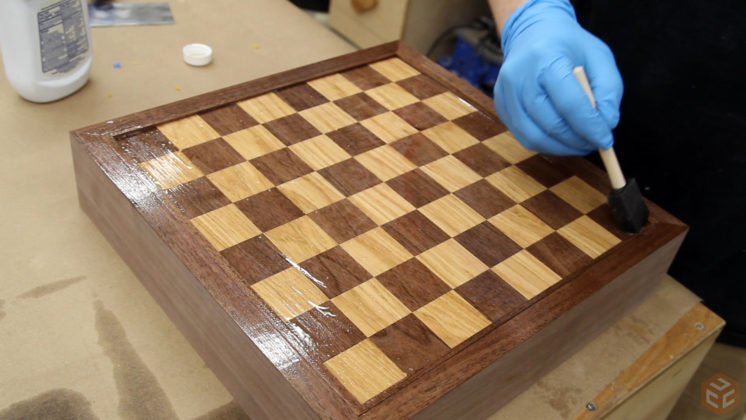
I'm soooooo pleased with how this turned out. My chess pieces finally have a decent home and I now have a board to use. I didn't use any felt for a couple of reasons. I'm not concerned with the pieces rattling around inside the box as it will be sitting idle 99.999999% of it's life and using felt will also cover up the beautiful hickory bottom panel.
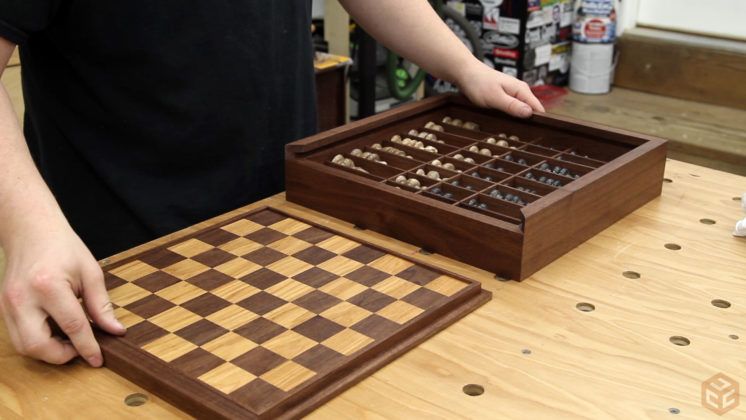
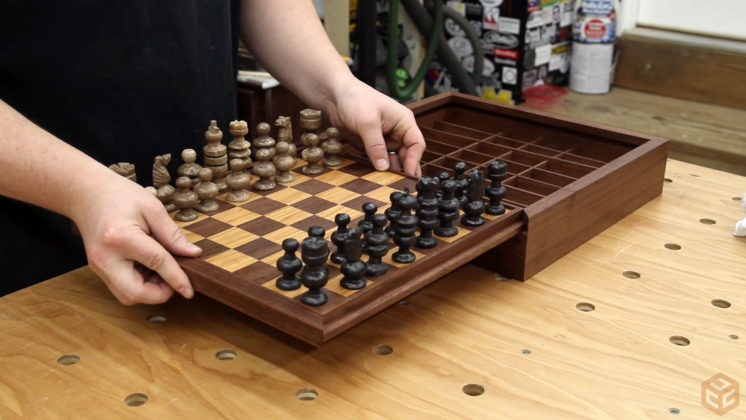

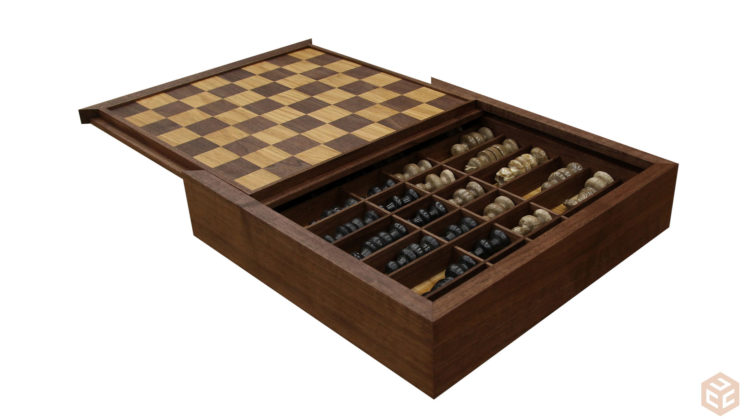
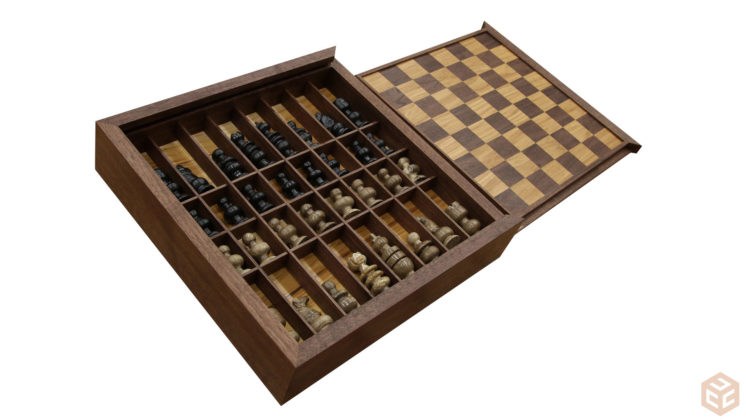


Chess Board With Drawer Plans
Source: https://jayscustomcreations.com/2016/11/making-a-custom-chess-board-box/
Posted by: vanalstynerefustoo.blogspot.com

0 Response to "Chess Board With Drawer Plans"
Post a Comment